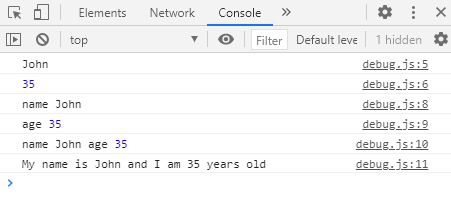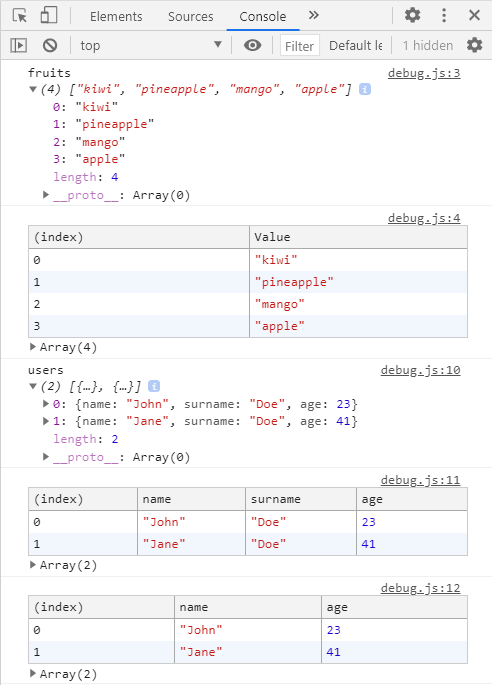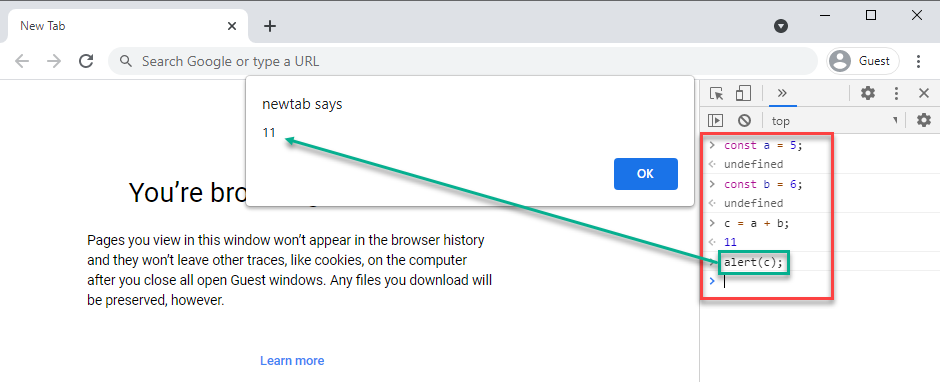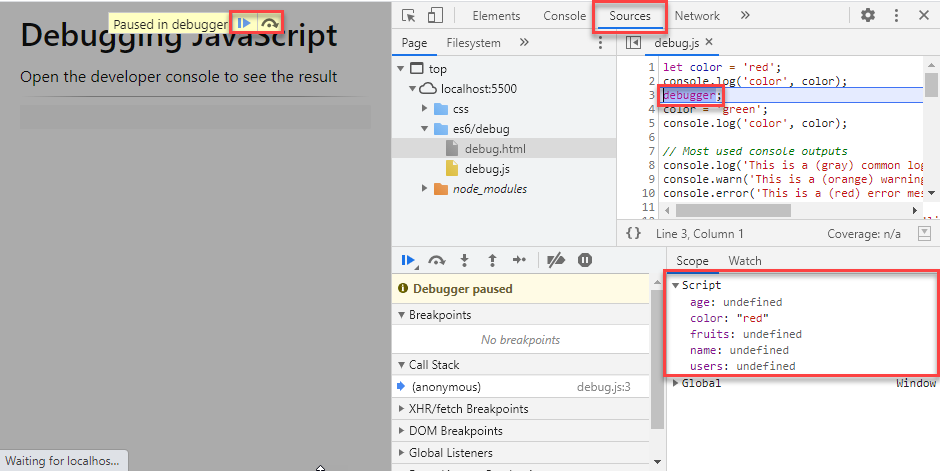# Debugging
- Debugging your code is very important when writing JavaScript
- If there is an error in your script, the execution will stop at that point, and the rest of your code will not be executed
- All errors will be displayed inside DevTools (
F12) under the Console tab

TIP
A good JavaScript developer always has his DevTools (F12) console open!
# Writing to the Console
- Open es6/debug/debug.html and es6/debug/debug.js
# Common console output
- As a developer, you can also write data to the console (yourself)
- This is especially useful to check the state or value of a variable at certain points during the execution
- The three most used console outputs are:
console.log(): outputs on a gray backgroundconsole.error(): outputs on a red backgroundconsole.warn(): outputs on an orange background
TIPS
- If you wish, you can use CSS to style your console output:
- Start the output string with
%c - Add a second parameter that contains the CSS styles for the output
- Start the output string with
- The console window can be emptied by the statement
console.clear()or by right-clicking in the console and choosing 'Clear console'
// Most used console outputs console.log('This is a (gray) common log message'); console.warn('This is a (orange) warning message'); console.error('This is a (red) error message'); // Use custom colors console.log('%c This is a message on a "lime" background', 'background: lime'); console.log('%c This is a "purple" message ', 'color: purple');Copied!
1
2
3
4
5
6
7
8
2
3
4
5
6
7
8

# Output multiple values
- If you output multiple values in your console, it's best to "document" each line/variable in the console
- Log multiple items together by separating them with a comma or by using template literals (back ticks) to combine everything in one line
// Log the value of a variable const name = 'John'; const age = 35; // Bad console.log(name); console.log(age); // Good console.log('name', name); console.log('age', age); console.log('name', name, 'age', age); console.log(`My name is ${name} and I am ${age} years old`);Copied!
1
2
3
4
5
6
7
8
9
10
11
2
3
4
5
6
7
8
9
10
11

# Tabular output
- When outputting large datasets, like arrays, it's not always obvious to find the data you want
console.table()displays the data in a nicely formatted table- If the dataset is too large/complicated, you can add a second parameter to reduce the content inside the table
// Log objects as a table const fruits = ['kiwi', 'pineapple', 'mango', 'apple']; console.log('fruits', fruits); console.table(fruits); const users = [ { name: 'John', surname: 'Doe', age: 23 }, { name: 'Jane', surname: 'Doe', age: 41 }, ]; console.log('users', users); console.table(users); console.table(users, ['name', 'age']);Copied!
1
2
3
4
5
6
7
8
9
10
11
12
2
3
4
5
6
7
8
9
10
11
12

# REPL
- REPL stands for Read-Eval-Print-Loop
- It is a quick and easy way to test simple JavaScript code straight from the Chrome developer console
- Open a new tab in Chrome and type in the console:
const a = 5;const b = 6;c = a + b;alert(c);

# Breakpoints (OPTIONAL)
- Add a
debuggerstatement to temporary pause the execution - The state of all variables, even the variables that are defined later in the script, are shown under the Sources tab
- Next, you can resume the script execution (
F8) or proceed statement by statement (F10)
let color = 'red'; console.log('color', color); debugger; color = 'green'; console.log('color', color); ...Copied!
1
2
3
4
5
6
2
3
4
5
6
